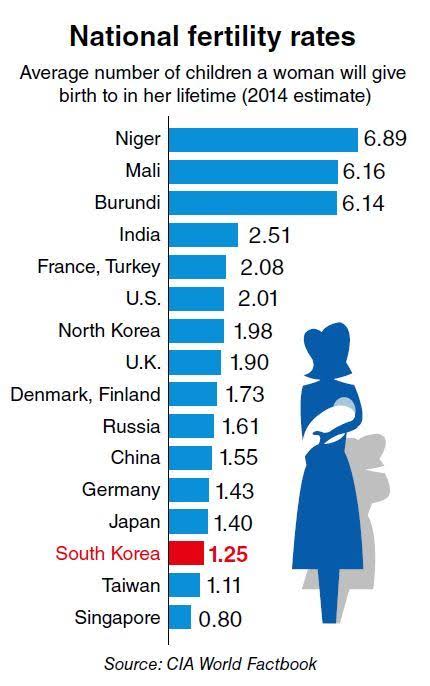South Korea has experienced the fastest fertility decline in recorded human history during the past 60 years. The average number of children a woman has during her reproductive years, or the country’s total fertility rate, was slightly less than six children per woman in 1960. That number was 0.78 in 2022. The only nation in the world with a fertility rate below one child per woman is South Korea, though China, Spain, and Ukraine are not far behind.
a weary economy and an aging populace.
Getty Images/Anthony Wallace/AFP
Poston Jr., Dudley L., Texas A&M University
No country in the world is more concerned about the possibility of an aging and declining population than South Korea.
South Korea has experienced the fastest fertility decline in recorded human history during the past 60 years. The average number of children a woman has during her reproductive years, or the country’s total fertility rate, was slightly less than six children per woman in 1960. That number was 0.78 in 2022. The only nation in the world with a fertility rate below one child per woman is South Korea, though China, Spain, and Ukraine are not far behind.
As a demographer who has studied Asian populations in great detail over the last forty years, I am aware that South Korea will be greatly impacted by this protracted and sharp decline. The country may become less wealthy and have a smaller population as a result of slowing economic growth.
older, less wealthy, and more reliant
Without taking into account the effects of immigration and emigration, countries require a total fertility rate of 2.1 children per woman to replace their population. Furthermore, since 1984, when it fell to 1.93 from 2.17 the previous year, South Korea’s fertility rate has continuously been below that figure.
The decline in South Korea’s fertility rate is all the more startling given how quickly it has happened.
The overall fertility rate in the United States was well above 6.0 in 1800. However, it took about 170 years for the United States to continuously fall below the replacement level. Furthermore, the U.S. fertility rate decreased more gradually from 3.0 to 1.7 in the little more than 60 years that South Korea’s fertility rate decreased from 6.0 to 0.8.
In some cases, fertility decline can be advantageous through what demographers call “the demographic dividend.” This dividend describes the rapid economic growth that occurs when birth rates fall and the age distribution of a nation shifts, resulting in a greater proportion of working-age individuals and a decrease in dependent young children and the elderly.
With little to no success, South Korea and numerous other nations, such as France, Australia, and Russia, have created policies to promote increases in the fertility rate.
Relying largely on immigration would be the only practical way for South Korea to reverse this trend.
Compared to the native-born population, migrants are usually younger, more productive, and have more children. However, unless they marry a South Korean, immigrants have no way to become citizens or permanent residents of South Korea due to its extremely restrictive immigration laws.
In fact, there were just over 1.6 million foreign-born people in 2022, or about 3.1% of the total population. The United States, on the other hand, has historically depended on immigration to support its working population; currently, more than 14% of the population is foreign-born.
The number of foreign workers would probably need to increase by nearly tenfold in order for immigration to counteract South Korea’s declining fertility rate.
Without it, South Korea will continue to lose people each year and will eventually become one of the oldest countries in the world, if not the oldest.



Leave a Reply